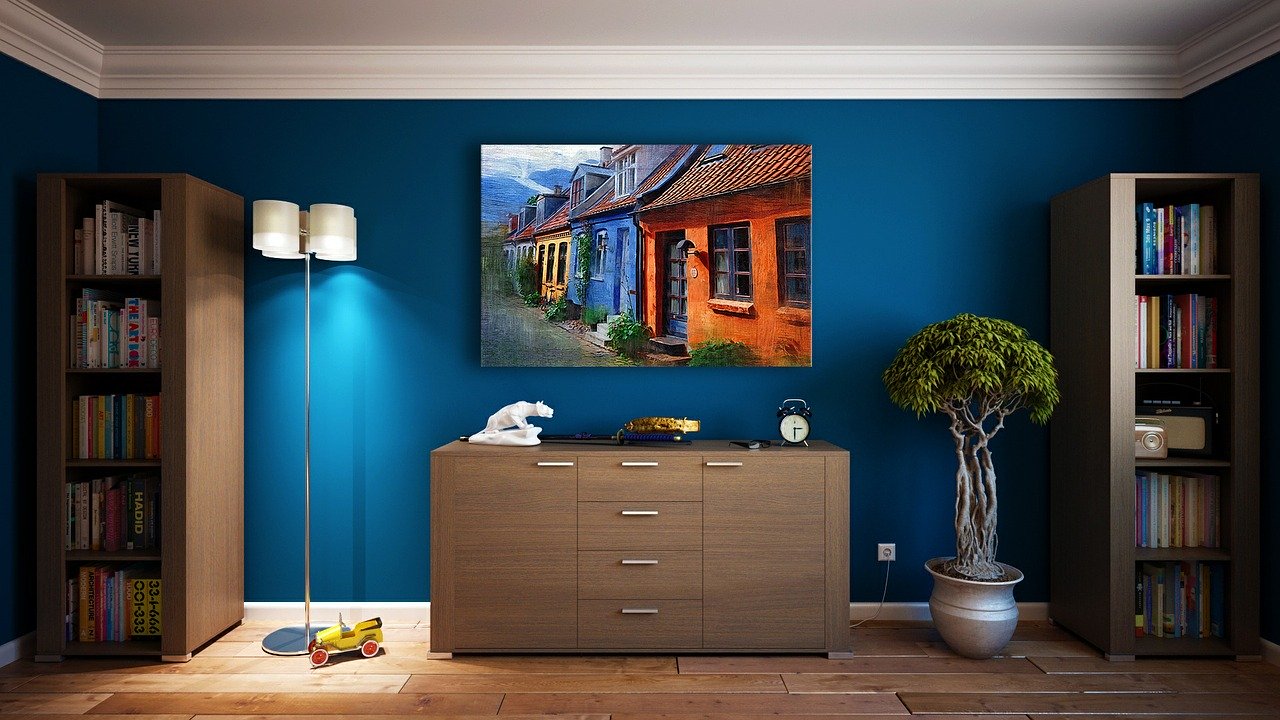If you are like me who likes taking on DIY projects at home, then you would be interested in how to soundproof a room DIY way.
I live in a very busy area and as such, I hear all sorts of noise. As a matter of fact, our house is right in front of the main road were all sorts of commercial vehicles pass and airplanes fly over our house too.
You can imagine the amount of noise we were exposed to. So, That was when I started my soundproofing projects again.
Where you stay will determine how much noise you might be exposed to. Some neighborhoods are quieter than others, some homes are also quieter depending on how many people are in the house, you might experience, mild to disturbing noise.

we all know that hiring a professional comes at a cost. You have to pay for their time and skills. Not everyone has enough money to hire or you simply like DIY home projects and want to experience some fun soundproofing your home.
You own the home, you can pretty much try lots of soundproofing ideas to reduce the noise level. However, if you are renting, you would want to implement non-invasive soundproofing tips that won’t make you get into any trouble with the homeowner.
DIY Ways to Soundproof a Room
There are two common types of sound. these are impact or structural sound and airborne sound. Airborne noise travel through the air and impact noise are vibrations that are generated when one object impacts on another object.
To properly tackle each type of noise, you need to use the right soundproof material. some soundproofing materials are more effective than others.
Below are some of the ways you can take charge of the amount of noise that comes in or leaves your room. By implementing these soundproof ideas, you will drastically reduce noise levels in the room.
1 . Use Acoustic Wedge Panels on Walls
In today’s homes and apartments, the walls are thin. Many homes now use drywall as the divider between rooms. These types of walls, if they were not soundproofed in any way during construction, can cause a lot of noise to travel from one room to another.
therefore, walls are a concern when you are trying to soundproof a room. Especially in situations where you share walls with neighbors.
Soundproof foam panels are great noise treatment materials. They are effective at absorbing airborne noise. This type of noise comes from loud conversations from people talking – could be from a television or share conversation from people.
These acoustic wall panels eliminate the echoes and background noises by controlling the reverberation that the sound made by bouncing off the walls.
Acoustic foam panels can versatile in use. They can be used for walls, doors, ceiling, and even windows. You would often find them in different shapes, colors, and sizes. When using these foam panels the larger the amount of space you cover, the better the noise reduction you will get.
I personally have had a lot of success using these acoustic foam panels or wedges on our walls.
2. Use Soundproof Wallpaper
These days, you will find a lot of soundproof wallpapers that have noise reduction abilities. If can even recreate a whole new wall in your room on top of the existing wall.
These soundproof wallpapers are made such that you can easily install them by sticking the wallpaper to the wall and be able to remove it whenever you like.
They are suitable for living room walls, bedroom walls, kitchen, sofa background, TV walls, dirty walls, featured walls, painted surfaces, wood board, on glass, kids room and just about any wall that an adhesive can stick to.
I found them very visually appealing. You get to choose the type of wallpaper that you like. Whether it is a brick wall, wood wall, stone wall, etc. You can get different designs and colors.
These soundproof wallpapers are waterproof, moist-proof and sound insulated. Very easy to clean and maintain with just a wet cloth. Best of all they are anti-children collisions.

How you install this soundproof wallpaper is, you simply peel and stick to the wall – because they are self-adhesive.
I use this soundproof wallpaper in our bedroom room.
Related: Effective ways to reduce noise through a wall
3. Take Care of Gaps and Cracks
Those small gaps and cracks you can see on the door and windows are undermining your efforts. You need to take care of them.
The door jamb and frame gaps can let in or out the noise. Depending on whether you are trying to block out the noise from leaving or entering the room.
Using a soundproof weatherstripping tape and soundproof sealant, you can close them. Both at the window and the door especially the frames, jambs, and stuff.
It’s not advisable to completely seal the room completely because you need air to prevent suffocation. so seal all the big gaps and cracks as much as possible.
4. Use a door Draft Stopper or Install Door Sweep
To close the biggest gap in the door, which is between the under of the door and the floor, you need to install a door sweep or a door draft stopper.
This way, any air that is trying to leave or enter the room from that gap will be blocked or the impact of such noise will be reduced.
They are also able to prevent insects and bugs from entering the room. If you are using air condition during summer, the cold air won’t be escaping out or the heat from the heater in winter won’t be lost.
This way, you are able to save on electricity.
The door sweep might take some time to install. You will need to drill holes for the screws to fasten inside. Just make sure you drill them at the right places to prevent spoiling the door with unwanted holes.
The door draft stopper is easier to install. They have an adhesive that helps you to stick it to the door. You would find both single-sided door draft stoppers and double-sided door draft stoppers in the market.
You would choose the one you are comfortable with. Door draft stoppers are also a non-invasive alternative to door sweep.
4. Hang Soundproof Blanket and Curtains
Soundproof blankets are good at reducing impact noise. Plus they are also versatile in use. These are the type of blankets you find moving companies use in packing to prevent the objects from knocking over each other and friction.
These blankets are heavy and thick. Although they are not aesthetically appealing, they are able to effectively block impact noise.
You can hang them on the door if the door is hollow to add extra mass. You can also use them on the walls, ceiling, and window.
Curtains are more visually appealing but are not as effective as the soundproof blanket. If you choose to go for the curtains, I recommend this 3-in-1 soundproof curtain. It is heavy and thick. I hung one in our room and its working out.
But you must remember soundproof curtains or drapes are not effective on their own. You will need to block the gap and cracks and implement some of these techniques mention here to make the noise reduction effective.
The curtains work better if they are complementing other soundproofing techniques.
5. Fill Cracks with Acoustic Caulk
Acoustic caulk is a good soundproofing compound. It’s used to seal the gaps on the perimeter of sound control walls/floors/ceilings. You can also use them to seal holes and gaps.e.g. around electrical outlets, pipe penetration.
The way this soundproof compound work is that it converts sound energy to heat. It especially good at blocking low frequencies.
6. Carpet the Floor
Hard floors such as concrete or wood cause sound to amplify as the echoes bounce around. If the floor is carpeted, then echoes will get absorbed.
Therefore you can get a nice carpet or rug and place it in the room floor. This way, if you are in an upstairs apartment, your footsteps won’t be disturbing those below you.
You may also check out other soundproofing floor ideas here
7. Mount shaky items
8. Soundproof the Ceiling
If you are living in an apartment or a house with more than one floor. Noise from upstairs affects your peace.
Some upstairs neighbors are not considerate. The heavy footsteps and loud noise can be a nightmare. In such a situation, you need to do something about your ceiling.
You can use different types of ceiling soundproofing materials to help you. Materials such as ceiling tiles – these come in different designs for you to choose from, Youcan install mass loaded vinyl mat on the ceiling- very good at impact noise like footsteps, vibration noise. If it airborne noise, you can use ceiling foam panels instead.
9. Rearrange the Room Furniture
Feel your room with home items such as furniture, bookshelves, and arts. This way the noise impact is not felt much. If the room is too empty, the noise that is in the room will echo around.
You can make walls thicker and more soundproofed by simply making use of bookshelves. Cover a wall in bookshelves and books for a fairly effective sound barrier. Plus, you get a nice library out of the deal.
10. Add Extra Mass to Drywalls
If the existing wall is made with drywall, then you can add extra mass to it by adding another drywall layer. But before you add the extra drywall, it will be better to place a mass loaded vinyl mat in between them with a soundproof compound in between.
Both the vinyl mat and the soundproof compound are soundproof materials that will help absorb the noise.
Final Words on DIY Ways to Soundproof a Room
Soundproofing a room by yourself is very possible. I have done a lot of them myself and I know it is possible for you.
Whether you are staying in a house or an apartment, there are many soundproofing techniques that can be applied by everyone to get some desirable results.
Of all the tips I have discussed above, none of them is invasive for renters except adding the extra mass to the drywall. But the rest are non-invasive and can be applied even if you are renting. I know the big problem many renters face is been afraid to love their deposit.
So just implement the soundproof tips that won’t potentially damage anything.
- How to Chew Quietly While Eating-Effective Tips - April 14, 2023
- Why is My Clutch Pedal Squeaking – Causes & Fixes - April 14, 2023
- Propane Tank Making Hissing Noise (Solved) - February 25, 2023

